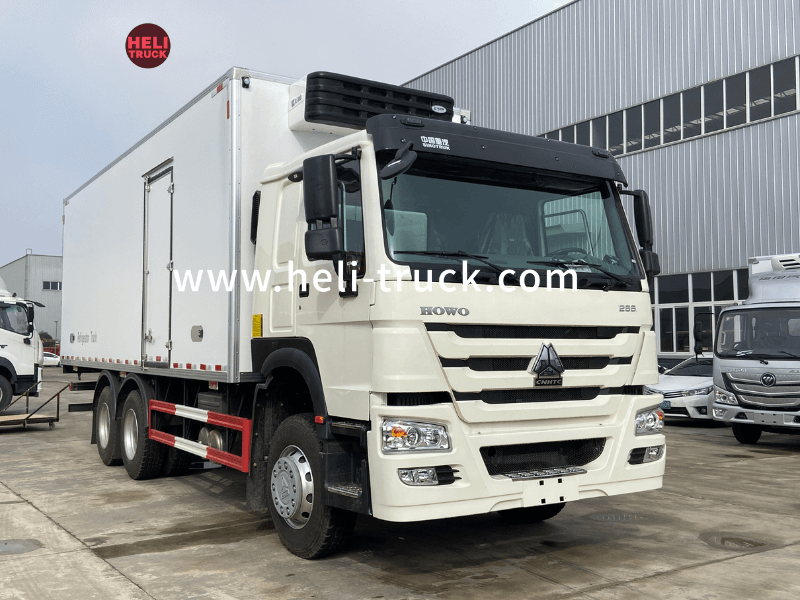Introduction
The management of waste has become an increasingly critical issue in today's world as rapid urbanization and population growth have led to a surge in the amount of garbage generated. In this context, garbage compactor trucks play a vital role in efficient waste collection and disposal. Bulk feed truck construction specialized vehicles are designed to compress and compact waste materials, thereby maximizing the truck's carrying capacity and reducing the frequency of trips to disposal sites. This article delves into the various aspects of garbage compactor trucks, their benefits, features, and considerations for purchasing one for sale.
Evolution of Garbage Compactor Trucks
The concept of garbage compactor trucks dates back to the early 20th century when municipalities and waste management authorities recognized the need for more efficient methods of waste collection. The first compactor trucks were rudimentary in design, consisting of a basic compaction mechanism powered by manual labor or primitive hydraulic systems.
Over the years, advancements in technology and engineering have transformed garbage compactor trucks into sophisticated and highly efficient machines. Modern compactor trucks are equipped with powerful hydraulic systems, automated compaction mechanisms, and advanced control systems that ensure optimal performance and productivity.
Types of Garbage Compactor Trucks
There are several types of garbage compactor trucks available in the market, each designed for specific waste collection requirements. The most common types include:

1. Rear Loader Compactor Trucks: Rear loader compactor trucks are equipped with a compaction mechanism at the rear of the vehicle. Waste collectors load the garbage into the hopper at the rear, which is then compacted and pushed into the body of the truck. These trucks are commonly used for residential waste collection.
2. Front Loader Compactor Trucks: Front loader compactor trucks feature a compaction mechanism at the front of the vehicle, allowing waste collectors to dump garbage into the hopper from the front. These trucks are suitable for commercial waste collection and are often used for collecting large volumes of waste from commercial establishments.
3. Side Loader Compactor Trucks: Side loader compactor trucks have a compaction mechanism on the side of the vehicle, enabling waste collectors to pick up and compact garbage from the curbside. These trucks are ideal for collecting waste from narrow streets and areas with limited access.
Benefits of Garbage Compactor Trucks
Garbage compactor trucks offer a wide range of benefits for waste management authorities, municipalities, and private waste management companies. Some of the key benefits include:
1. Increased Efficiency: Garbage compactor trucks are designed to maximize the carrying capacity of the vehicle by compacting waste materials. This results in fewer trips to disposal sites, reduced fuel consumption, and lower operational costs.
2. Improved Hygiene: Compacting waste reduces the risk of spillage and odor, thereby improving the overall hygiene of the waste collection process. This is especially important for residential areas and public spaces where cleanliness is a priority.
3. Environmental Sustainability: By reducing the number of trips required for waste collection, garbage compactor trucks help minimize carbon emissions and reduce the environmental impact of waste disposal. This aligns with global efforts to promote sustainable waste management practices.
4. Enhanced Safety: Garbage compactor trucks are equipped with safety features such as automated compaction mechanisms, reverse cameras, and warning systems to ensure the safety of waste collectors and pedestrians during the waste collection process.
Features to Consider When Buying a Garbage Compactor Truck
When considering the purchase of a garbage compactor truck, several key features and factors need to be taken into account to ensure the optimal performance and efficiency of the vehicle. Some of the essential features to consider include:
1. Compaction Mechanism: The type and efficiency of the compaction mechanism are crucial factors to consider when buying a garbage compactor truck. Look for trucks with powerful hydraulic systems and automated compaction mechanisms for efficient waste compression.
2. Capacity: The capacity of the compactor truck is another critical consideration, depending on the volume of waste to be collected and the frequency of collection. Choose a truck with a suitable capacity that meets your specific waste collection requirements.
3. Durability and Build Quality: Garbage compactor trucks operate in demanding conditions and are subject to heavy wear and tear. Opt for trucks built with high-quality materials and robust construction to ensure durability and longevity.
4. Safety Features: Safety should be a top priority when purchasing a garbage compactor truck. Look for trucks equipped with safety features such as emergency stop buttons, reverse alarms, and warning systems to prevent accidents and ensure the well-being of waste collectors.
5. Maintenance and Serviceability: Consider the ease of maintenance and availability of spare parts when selecting a garbage compactor truck. Choose a vehicle from a reputable manufacturer with a reliable service network to ensure prompt maintenance and support.
Conclusion
Garbage compactor trucks play a crucial role in efficient waste management by enabling the compression and collection of waste materials in a safe and hygienic manner. These specialized vehicles offer a range of benefits, including increased efficiency, improved hygiene, environmental sustainability, and enhanced safety. When purchasing a garbage compactor truck, it is essential to consider key features such as the compaction mechanism, capacity, durability, safety features, and maintenance requirements to ensure optimal performance and longevity. By investing in a high-quality garbage compactor truck, waste management authorities and companies can enhance their waste collection operations and contribute to a cleaner and more sustainable environment.
